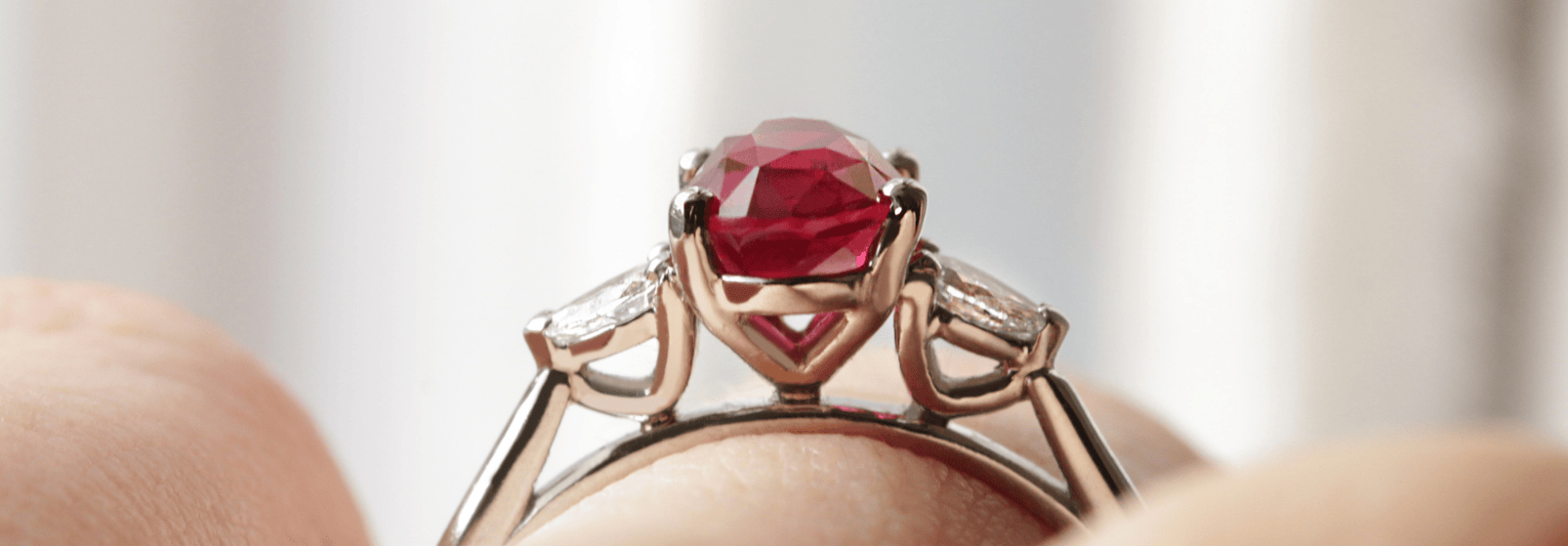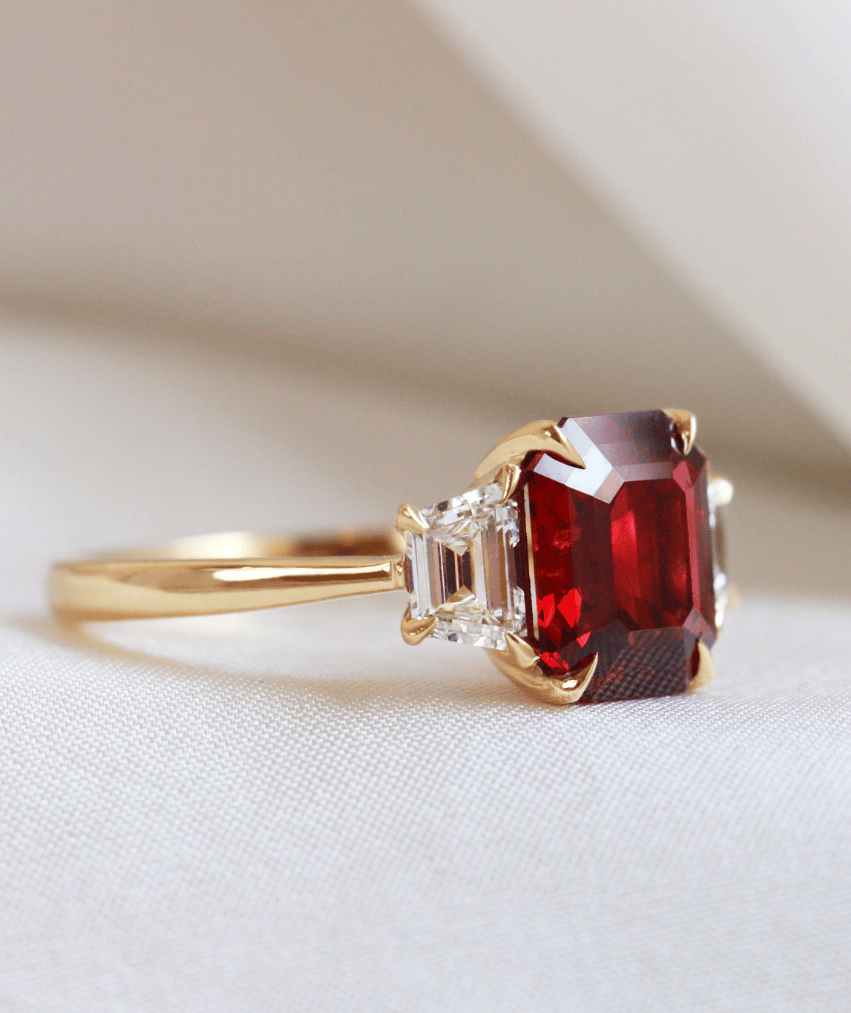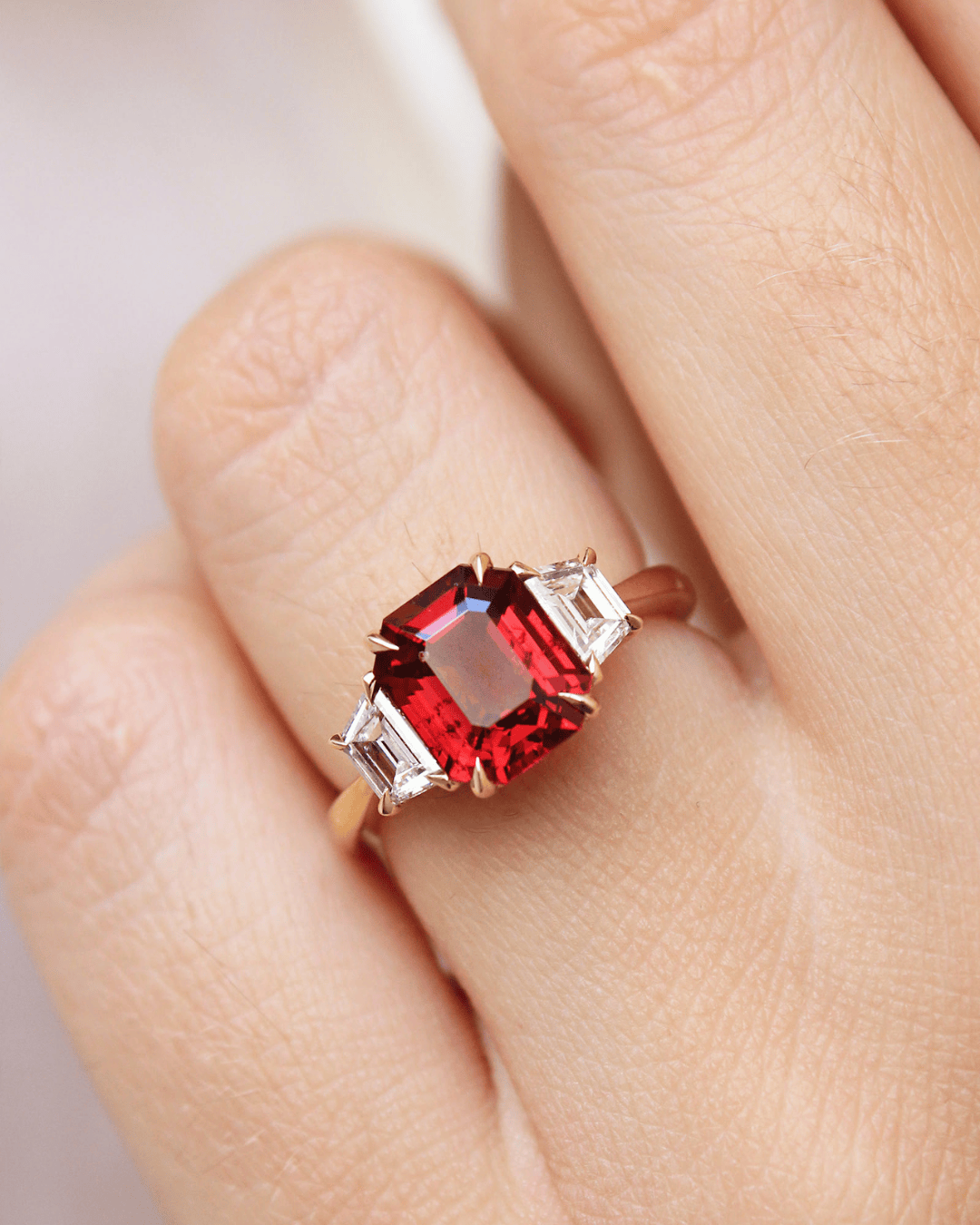
25 Sept 2025 — by Flawless Fine Jewellery — Reading time 3 minutes
The Legacy of Burmese Rubies: Origin, Quality & Investment Value
The Legacy of Burmese Rubies: Origin, Quality & Investment Value
The Legacy of Burmese Rubies: Origin, Quality & Investment Value
Burmese Rubies, or Myanmar rubies, are listed among the Earth’s most coveted gemstones. Came into the precious gemstones category due to their deep red colors, they have been stealing the hearts of royalty and gem connoisseurs for centuries. The Mogok valley of Myanmar is the origin of Burmese stones. Their precious ruby colours, impressive clarity, and an intense glow are the reasons for their higher price and value. And the rich legacy and geographical rarity make them higher in demand in both the jewelry and investment markets.
Burmese Rubies are admired globally and can be commonly seen in heirloom rings or auctioned for record-breaking sums. Are you curious to explore what their fascinating history, distinguishing features, characteristics & and quality checklist? If yes, continue reading.

Topics covered:
Burmese Ruby History and Origin
As the name suggests, Myanmar, also called Burma, is the land of origin of Burmese rubies. And their highest production place is the Mogok Valley, which is now also hailed as the “Valley of Rubies.” Another famous area for the production of these finest rubies in the world is Mong Hsu, but the quality is comparatively lower. Also, they need a deep process that includes heat treatment, where the colour and texture of these rubies are improved. Flawless fine Jewellery, recognizing the unparalleled allure of these gems, features exquisite Burmese ruby rings in their collection. Each piece is meticulously crafted to highlight the vibrant hue and natural brilliance of these precious stones
Another interesting fact is that rubies produced in the Mogok rubies region are naturally perfect, requiring no extra treatment. They are just untreated Burmese rubies. If we talk about the mineral composition, then they are high in chromium and low in iron, which is why they are rich in red fluorescence that sparkles amusingly, especially under natural light.

How to identify Burmese rubies?
1. Heated vs. Unheated Rubies: Differences
Heated Rubies
When natural rubies are go under the exposure to high temperatures to improve their color and clarity, they are called heated rubies.
No extra chemicals are added, just the high heat.
Unheated or Untreated Burmese rubies
These are the natural rubies with no heat process or any enhancements.
100% natural color and clarity, which is why they have higher prized value in comparison to heated rubies.
2. Burmese Ruby characteristics
Here are the highlights of a real and natural Burmese Ruby :
1. Burmese rubies are famous and in demand due to their “pigeon blood ruby red color”. They are available in bright and glowing red colour with a touch of blue colour.
2. The natural glow of these rubies is astonishing and shines most intensely.
3. It sparks so much that it looks like the ruby has a light of its own.
4. The natural element of the rubies has roots in the Mogok soil that give the ruby a special kind of brilliance, especially in daylight.
3. Burmese Ruby Color- Pigeon Red Ruby
“Pigeon Blood Red” is the premier color of ruby worldwide, which are mined in Burma’s Mogok Valley and is highly prized. It is not just red, it is vividly red, a deep and rich red that has a scintillating touch of either blue or purple. It will remind you of fresh rose petals, and possess a glowing representation of the quality of richness. It is neither dull or dark, and it is distinctly not pinkish. It is confident and alive, and also, like I said, pure and bold.
4. Burmese Ruby Clarity- Checkpoints
Here are some checkpoints to define natural Burmese Rubies’ clarity :
1. Natural Inclusions are Normal
Tiny lines, spots, or clouds are typical in natural Burmese rubies.
2. Eye-Clean Rubies are Rare
Rubies that are eye-clean, have no visible marks with the naked eye, are quite rare and valuable.
3. Look for Balanced Clarity
Slight inclusions are fine as long they don’t take away from the ruby’s beauty or glow.
4.Avoid Surface Cracks
Cracks on the surface or edges can affect both durability and value.
5.Check for Certification
Always request a gem lab report (like GIA, or GRS), even if it comes with a cost, for verification of clarity, quality, and authenticity.
5. Cut and Carat: Burmese Ruby Jewelry
The cut of a ruby has an impact on how the light will reflect from within the stone. Burmese rubies are usually cut in oval, cushion, or round cuts in order to emphasize the color and brilliance. A well-cut ruby will show a consistent color and sparkle situated on all polygonal angles.
Carat weight is also a major contributing factor to value. As the size increases, prices per carat also rise exponentially. A top-quality untreated Burmese ruby over 2 or 3 carats can be incredibly rare and can command phenomenal prices. To illustrate, a 3-carat untreated pigeon-blood Burmese ruby can be worth more than a 5-carat treated ruby from another locality.
Investment Value: A Gem That Grows with Time
Natural Burmese rubies are considered to a metaphysical properties, as well as being highly coveted by investors. They are priced higher due to their exceptional natural glow, clarity, shinier colour, and quality. These gemstones are high in demand and mostly found in cherished heirlooms and valuable assets. Their money value is growing tremendously, as a result, they are known as a great commodity to invest in today and get profitable value in the future.

Tips for buying Burmese rubies
Take a look at these easy tips when shopping for Burmese ruby jewelry, like Burmese ruby engagement rings or any other commodity.
Consider the budget and select the value you are looking for regarding the size, color, origin, or lack of treatment.
Buy from trusted gem labs, and ask for certification to confirm origin and treatment status.
Seek full transparency and returns.
Look closely at the ruby’s color and clarity under natural light.
They have long-term value, especially if buying an untreated Burmese ruby over 2 carats.
The Final words
The purpose of the Burma Rubies guide is to make everyone familiar with its legacy, origin, colour, clarity, and investment value. The colour is glowing, and you are not just wearing a gemstone but embracing history and nature at the same time, especially when you are wearing Burmese ruby jewellery pieces.
FAQ’s
1. Burmese rubies are said to be special for what reason?
Collectors and investors highly value Burmese rubies for their brilliant pigeon’s blood hue, great transparency, inherent fluorescence, and rarity, particularly when unprocessed.
2 Do Burmese rubies have an outstanding level of quality?
Indeed. Burmese rubies are among the best quality rubies worldwide because of their vivid crimson color, brilliant natural shine, and outstanding clarity.
3. What benefits are thought to result from donning a Burmese ruby?
Though they are a sign of love and passion, Burmese rubies are said to bring energy, raise confidence, ward against bad vibes, and draw money.
4. How can one know whether a Burmese ruby is genuine?
Certification from reliable gem labs and thorough expert inspection of its inclusions and origin provide the most dependable route.
5. Burmese rubies are worth a long-term investment?
Yes. Their historic reputation, rarity, and growing demand justify their value. Purchase from Flawless, where all stones are certified and ethically sourced, for assured authenticity and quality.

